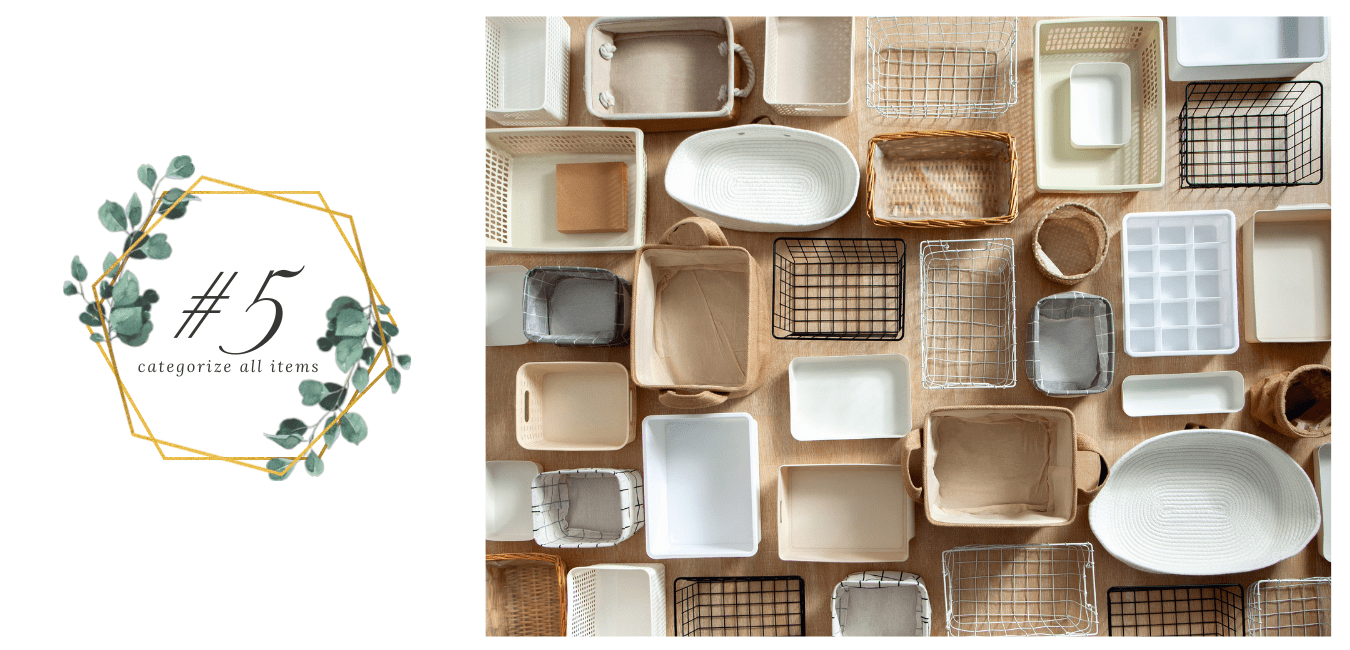With rainstorms and wildflowers, spring is always a season for fresh starts and new beginnings. Spring-cleaning is another hallmark of the season. According to Emily Williams in a post for Dignity Health, there are a few reasons why we religiously clean our homes each spring. Williams writes that this “time-honored tradition” dates back to a period “when homes were heated by wood.” The fireplaces and lamps of yore “left layers of soot on every surface.” As soon as Spring arrived each year, “it was time to open up the windows and doors” to let in the fresh spring air. It was the time to “pull out the rugs and bedding to beat away the dust, and scrub the floors and windows.” Today, spring-cleaning is less so a practical necessity and more so a symbolic gesture. To modern Americans, spring-cleaning represents “a time to come out of hibernation and let the sunshine reveal all the dust left behind.” Spring-cleaning is not solely about storing off-season clothes, treating tile, clearing clutter and wiping away dust. It is an opportunity to reset and reassess while lightening our mood and improving our physical health. When spring-cleaning, homeowners can also consider the condition of their furniture, finishings and overall property. This allows them to identify and diagnose issues before those problems worsen. In this post, we offer our top ten tips for spring-cleaning. Learn how to categorize, declutter and deep clean your home. From organizing the playroom to hanging spring and summer clothes, navigate the spring-cleaning season with the tips listed below.
10 Spring Cleaning Tips for 2022
. # 1 S T A R T B Y S E T T I N G Y O U R I N T E N T I O N S .

First on our list of the best spring-cleaning tips for 2022 is to set your intentions before tackling a single space. Do you want to declutter and find things to donate? Would you like to deep clean so every space feels fresh and healthy? Do you want to come up with a daily cleaning routine to make the big jobs easier?
In an interview with Kavitah Cardoza and Sylvie Douglis for NPR’s Life Kit program, Taryn Williford explains why this step is so crucial. Williford recommends that you first “‘step back, zoom out and figure out your goals and really get your mindset into shape.’” She notes that “‘identifying what you want ahead of time makes it easier to get down to it.’”
. # 2 M A K E A S P R I N G C L E A N I N G C H E C K L I S T .

Next, you will want to make a spring-cleaning checklist. This spring-cleaning checklist should list each space to be cleaned — e.g. the primary bathroom, linen closet and garden shed. The list should identify tasks for each space — e.g. clearing countertops, deep cleaning the shower and replacing staples in the pantry. It should also include a list of cleaning supplies you will need — e.g. baking soda, bleach, rags, a spray bottle, special tile cleaner, etc.
After creating your checklist, you might choose to divide tasks among family members or roommates. On the other hand, you might find that delegating is more work than it’s worth. If you do choose to assign tasks to other members of your household, be sure to keep track of who has which job.
. # 3 C R E A T E A S C H E D U L E & D O N ‘ T T R Y T O D O I T A L L I N O N E D A Y .

When preparing to clean the entire house, many of us quickly become overwhelmed. Trying to clean your entire house in a single day — as many aim to at the start of spring — is often a losing proposition. Instead of trying to clean your whole home in one afternoon or weekend, create a schedule that spans the entire month of April. In her article “A Whole-House Cleaning Schedule You’ll Actually Stick To” for Better Homes & Gardens, Caitlin Stole elaborates. Stole notes that the key to spring-cleaning “lies in creating a realistic schedule that truly works for you and your home.”
Quoting Aby Garvey, Stole writes that creating a “‘whole-home cleaning schedule allows you to feel less stressed.’” This is “‘because you know that neat and tidy isn’t ever too far out of reach.’” Imagine you were to notice a stain on your couch cushions or a thick layer of dust on your bookshelf. With a schedule, you can rest easy knowing exactly when you will have time to clean that area of your home. Instead of frantically rushing around trying to clean everything at once, you will go through your house systematically. In short, setting a schedule takes a lot of the confusion, stress and time sensitivity out of spring-cleaning.
. # 4 R E M O V E E V E R Y T H I N G F R O M D R A W E R S , S H E L V E S A N D C A B I N E T S .

At this point, you have created a cleaning checklist and schedule. Now, it is time to actually start cleaning. Head into the first room and remove all items from drawers, shelves and cabinets. If space allows, place these items in the center of the room to make sorting easier. Removing everything from the drawers, shelves and cabinets in each room lets you assess what you already have. It also lets you deep clean all the shelves and drawers in one shot, thereby streamlining the process.
Lucia Tonelli explains in her article “The Home Edit Founders Share Their Top Organizing Tips” for Elle Decor. Tonelli writes that “the biggest mistake people make when organizing their home is trying to purge and organize simultaneously.” According to Tonelli, Clea and Joanna of The Home Edit “refer to this as a black belt level, do-not-try-this-at-home technique.” Before categorizing and organizing items, “it’s imperative that you free up space and remove clutter.”
. # 5 C A T E G O R I Z E E V E R Y T H I N G .

Before you sort items into piles of “trash,” “keep” and “donate,” be sure to categorize everything. This way, you will be able to see if you have duplicates of certain items. It will also help you edit further — adding to your “trash” and “donate” piles instead of growing your “keep” pile.
. # 6 S O R T A L L I T E M S I N T O P I L E S O F K E E P T R A S H & G I V E A W A Y .

After categorizing all items in your kitchen, primary bedroom, living room, study, garage or den, sort each into its proper pile. Organizers usually choose to name these piles “keep,” “trash,” “recycle,” “compost,” “store” or “donate.” Be sure to donate or store duplicates instead of keeping them all in your kitchen or bathroom. Once you get rid of items designated “recycle,” “trash” or “donate,” you can choose containers for each category of the “keep” pile.
. # 7 C L E A N T O P T O B O T T O M .

After clearing shelves and gathering all necessary cleaning supplies, prepare to clean from top to bottom. Remember to clean the items you pulled off shelves and out of cabinets last. If you dust a countertop before dusting a ceiling fan, the dust from the fan will coat your counter after you have already cleaned. This means you must clean the countertop for a second time, thereby extending the amount of time it takes to clean each space.
In her article “Yes, There’s an Accepted Order of Operations for Dusting—Are You Doing It Wrong?” for Well + Good, Tehrene Firman explains. Firman writes that “when you start at the tallest level…the dust that falls down will be [removed as you] sweep of the lower-level.” These “lower-level dust collectors” include elements like countertops, lamps, tables, couches and rugs. The dust and dirt that tumbles down “from those spots will then be swiped for good when you sweep, mop, or vacuum the floors.”
For a thorough cleaning, consider this when creating your schedule. Move through your house room-by-room instead of project by project. For example, avoid cleaning all the air vents or baseboards in your home at once.
. # 8 D R Y C L E A N B E F O R E W E T C L E A N I N G .

The hierarchy of cleaning is not limited to “high before low.” Homeowners should also dry-clean before they wet cleaning each surface. Always dust, sweep and vacuum before cleaning surfaces with a damp cloth. By removing dust bunnies and dirt before introducing moisture, you avoid creating dense slurries of muck. You also reduce the number of cleaning cloths dirtied. When dealing with upholstery or natural stone, dry cleaning first ensures you do not scratch the surface with debris or rub dirt into stains.
. # 9 S T O R E O F F – S E A S O N & D U P L I C A T E I T E M S .

From Christmas decorations and outdoor heaters to wool sweaters and flannel sheets, most of us have seasonal items in our homes. Many of us also have duplicate or “back-up” items. Storing off-season and duplicate items in a garage, garden shed or off-site unit offers you more usable space indoors. It also shifts your mindset from winter to spring. Be sure to clean each object before placing it in storage. Keep an inventory of over-flow items to avoid buying extras at the store when you already have them in stock.
. # 1 0 E S T A B L I S H A D A I L Y , W E E K L Y & M O N T H L Y C L E A N I N G R O U T I N E .

After cleaning your home this spring, be sure to establish a daily, weekly and monthly cleaning routine. This will help keep your house fresh and organized all year long. Creating a regular cleaning schedule you and your family promise to follow should reduce the number of tasks on next year’s spring-cleaning list. As you draft your new cleaning routine, avoid being too aspirational. Focus on crafting a schedule you and your family can and will follow without disrupting your daily lives too much.



:max_bytes(150000):strip_icc()/house-cleaning-schedule-for-every-day-3129149-06-b23eacd9ef3a41fc833c68e095b34c72.jpg)


More Stories
Living Room Trends 2023 To Jazz Up Your Home
David Selinger, CEO of Deep Sentinel
How to prepare your home for a cat